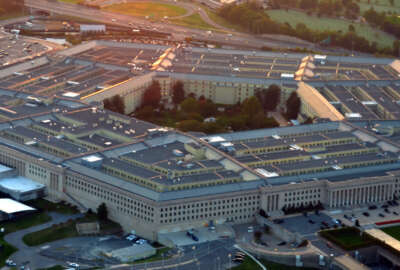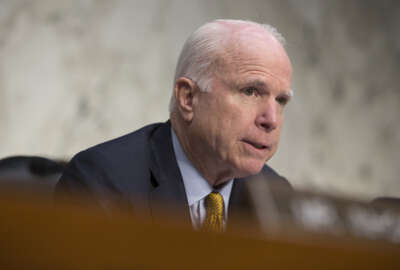
Elevation of US Cyber Command recognizes its ‘coming of age’
U.S. Cyber Command's elevation to a unified combatant command is "mostly symbolic," but the symbolism is important.
Almost since the inception of U.S. Cyber Command, the organization the Defense Department created in 2009 to serve as its focal point for military cyber operations, the question has been when, not if, it would be elevated to become a full unified combatant command.
President Donald Trump formally signed off on that step last week, ratifying a plan that had been under discussion inside the Pentagon for several years and that Congress mandated in the annual Defense authorization bill last December.
The decision boosts CYBERCOM’s position in the DoD organizational chart to put it on par with the military’s other functional combatant commands: Special Operations Command, Transportation Command and Strategic Command.
In and of itself, it does little to increase the command’s authority or operational posture, but it is a recognition of how far the command has come in the last eight years, said Bill Leigher, a retired Navy rear admiral who served as the deputy commander of that service’s Fleet Cyber Command starting in 2009, when CYBERCOM and its military service components were first beginning.
“It’s largely symbolic, but it’s also really important. For me, this says that Cyber Command is coming of age,” Leigher said in an interview for Federal News Radio’s On DoD. “If you go back to the beginning, it had to depend on its relationship with the National Security Agency and it’s always been tethered to some other entity. Now that you see these tethers loosening, it’s a sign that they’re maturing, they’re being effective, and they’re ready to have a direct relationship with other combatant commands.”
Leigher, who is now an executive at Raytheon, said the initial creation of CYBERCOM was a major step in and of itself: It allowed the military components’ own newly-created cyber commands to stop operating in what he termed a “loose confederation” and begin behaving as a cohesive organization with common training and doctrine, much like the military’s other joint organizations.
Another key milestone came in 2013, when the command began constructing joint teams of cyber experts to defend the U.S. homeland, defend military networks and conduct offensive military operations. The teams — 133 in all — are now collectively known as the Cyber Mission Force.
“But now the thing you’re starting to see is some differentiation at the service level,” Leigher said. “For example, the Army’s cyber protection brigades are very broadly focused across the Army as a cyber defense response force, and you hear them talk about how they’re going to integrate cyber capabilities at the brigade level as fast as they can as part of their cross-domain battle concept. I would say the other services are probably a little bit further behind there. They’re still very much focused on network defense as opposed to looking at things that are happening within a wing or a carrier battle group.”
The large remaining organizational question surrounds CYBERCOM’s ongoing relationship with NSA. As of now, both organizations are under the charge of a dual-hatted four-star military officer and are co-located within a common headquarters at Fort Meade, Maryland. Trump said last week that Defense Secretary James Mattis will develop recommendations on whether to formally split the two organizations, and that a decision will be announced “at a later date.”
Under existing law, the Pentagon cannot split CYBERCOM from the NSA until it certifies that doing so would not pose risks to the command’s military effectiveness.
But irrespective of whether the dual-hat arrangement continues in a formal sense, Leigher predicted Cyber Command will always have a close relationship with its counterparts in the NSA because of the need to “deconflict” the U.S. government’s intelligence and military activities in cyberspace.
“Previous executive orders have already established NSA’s role in that function,” he said. “It’s fairly easy to unknowingly bump into someone else in cyberspace, and there has to be a deconfliction agent there. NSA still has the predominant capability to be able to do that. I think there will also be a relationship in terms of exchange of personnel, very much the way it is today, where people flow back and forth between an NSA assignment and a DoD assignment. I think it will be a close relationship for years to come.”
Copyright © 2024 Federal News Network. All rights reserved. This website is not intended for users located within the European Economic Area.
Jared Serbu is deputy editor of Federal News Network and reports on the Defense Department’s contracting, legislative, workforce and IT issues.
Follow @jserbuWFED




